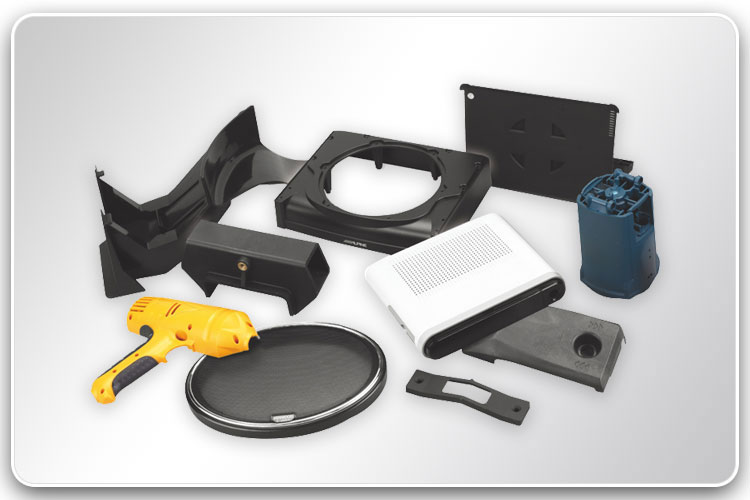In the pressure holding stage of plastic injection molding, its function is to continuously apply pressure, compact the melt, and increase the density (densification) of the plastic to compensate for the shrinkage behavior of the plastic. During the pressure holding process, the back pressure is relatively high because the mold cavity has been filled with plastic. In the process of maintaining pressure and compaction, the screw of the injection molding machine can only move forward slowly, and the flow speed of the plastic is relatively slow. The flow at this time is called the pressure maintaining flow. In the pressure holding stage, the plastic is cooled and solidified by the mold wall faster, and the melt viscosity increases quickly, so the resistance in the mold cavity is very large. In the later stage of pressure holding, the material density continues to increase, and the plastic parts are gradually formed. The pressure holding stage should continue until the gate is cured and sealed. At this time, the cavity pressure in the pressure holding stage reaches the highest value.
In the pressure-holding stage, the plastic exhibits partial compressibility due to the relatively high pressure. In the higher pressure area, the plastic is denser and the density is higher; in the lower pressure area, the plastic is looser and the density is lower, so the density distribution changes with position and time. In the process of holding pressure, the plastic flow rate is extremely low, and the flow no longer plays a leading role; pressure is the main factor that affects the process of holding pressure. In the process of holding pressure, the plastic has filled the mold cavity, and the gradually solidified melt is used as the pressure transmission medium. The pressure in the mold cavity is transferred to the surface of the mold wall through the plastic, which tends to open the mold, so a proper clamping force is required to lock the mold. Under normal circumstances, the mold expansion force will slightly open the mold, which is helpful for the exhaust of the mold; however, if the mold expansion force is too large, it is easy to cause burrs and flashes of the molded product, or even open the mold. Therefore, the injection molding machine selected for plastic injection molding should have an injection molding machine with sufficient clamping force to prevent mold expansion and effectively maintain pressure.
Under the new environmental conditions of injection molding, we need to consider some new injection molding processes, such as gas-assisted molding, water-assisted molding, foam injection molding, etc.


 English
English  Español
Español  Português
Português  русский
русский  Français
Français  日本語
日本語  Deutsch
Deutsch  tiếng Việt
tiếng Việt  Italiano
Italiano  Nederlands
Nederlands  ภาษาไทย
ภาษาไทย  Polski
Polski  한국어
한국어  Svenska
Svenska  magyar
magyar  Malay
Malay  বাংলা ভাষার
বাংলা ভাষার  Dansk
Dansk  Suomi
Suomi  हिन्दी
हिन्दी  Pilipino
Pilipino  Türkçe
Türkçe  Gaeilge
Gaeilge  العربية
العربية  Indonesia
Indonesia  Norsk
Norsk  تمل
تمل  český
český  ελληνικά
ελληνικά  український
український  Javanese
Javanese  فارسی
فارسی  தமிழ்
தமிழ்  తెలుగు
తెలుగు  नेपाली
नेपाली  Burmese
Burmese  български
български  ລາວ
ລາວ  Latine
Latine  Қазақша
Қазақша  Euskal
Euskal  Azərbaycan
Azərbaycan  Slovenský jazyk
Slovenský jazyk  Македонски
Македонски  Lietuvos
Lietuvos  Eesti Keel
Eesti Keel  Română
Română  Slovenski
Slovenski  मराठी
मराठी  Srpski језик
Srpski језик 